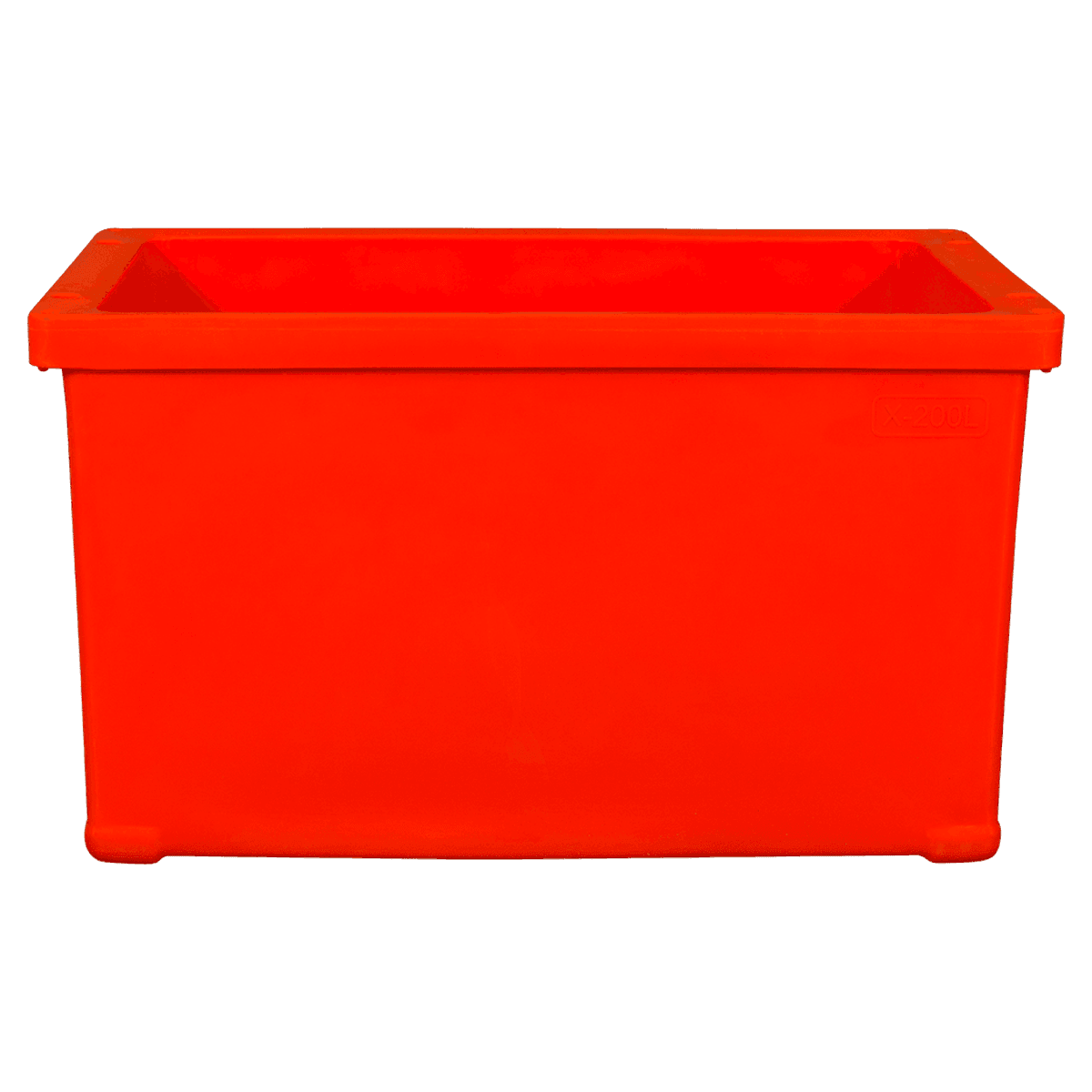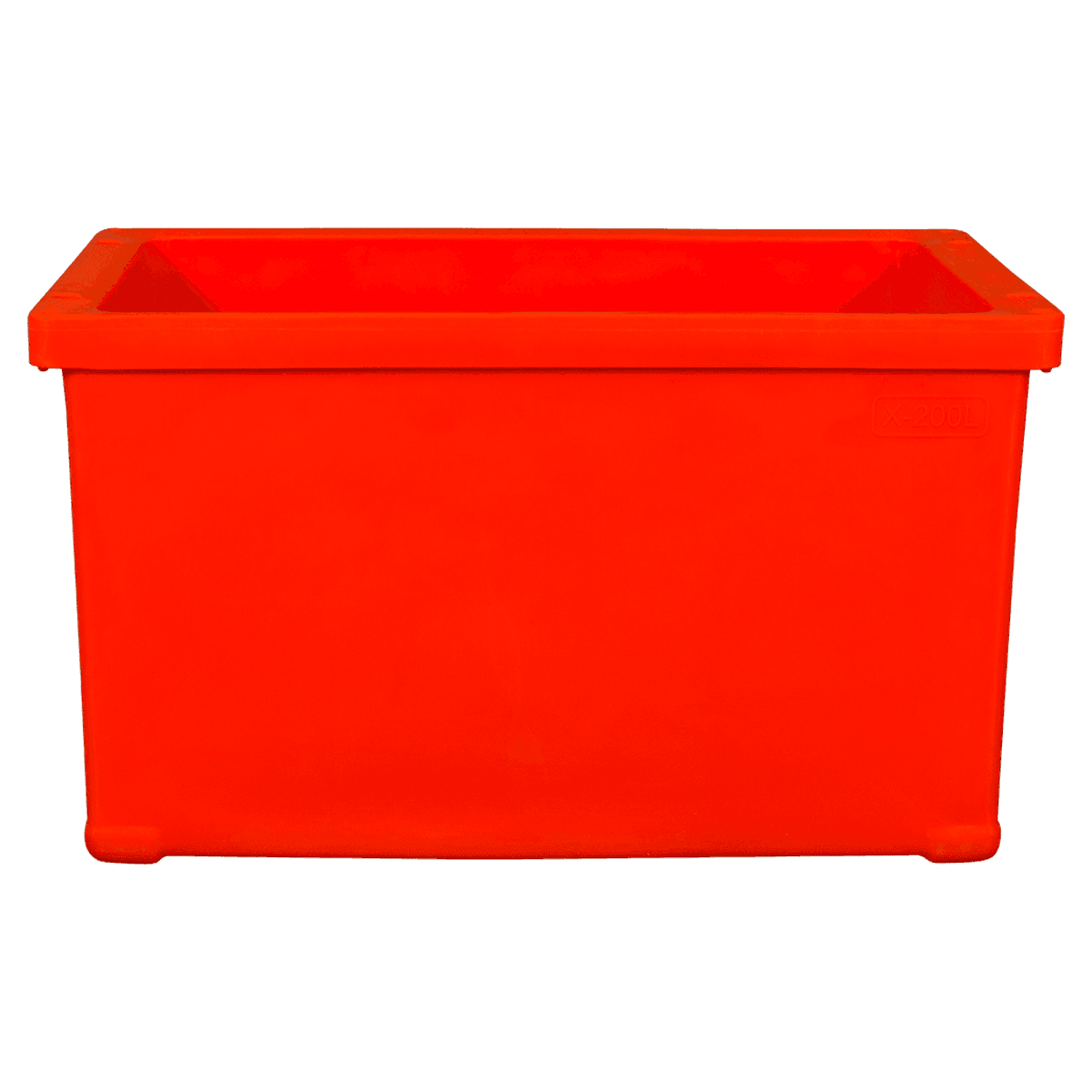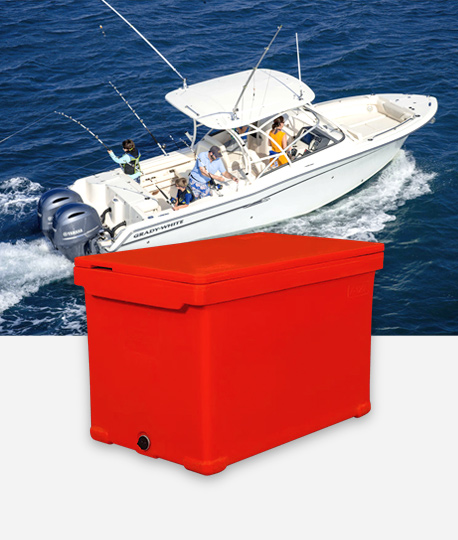What measures should be taken when using insulated seafood containers for long-distance live fish transportation?
(1) Oxygen supply:
Dissolved oxygen in water has a certain limit. The biggest problem in transportation is the lack of oxygen in live fish. Generally, warm-water aquatic animals require dissolved oxygen in the water to be kept at least 5mg/L. For this reason, try to supply oxygen during transportation.
Oxygen supply has the following measures: fresh water should be injected frequently during transportation, and the temperature of the new water should be appropriate, not too high or too low, and the temperature difference should generally be less than 5°C. In addition, an aerator or an inflator can be carried during transportation to increase oxygen to the water body at any time. Or put oxygen-releasing drugs into the water, such as hydrogen peroxide (H2O2) or ammonium sulfate [(NH42)2SO4], to increase the amount of dissolved oxygen in the water. Slightly oscillate the container up and down moderately, and generate water waves by oscillating the container to increase the contact area between water and air, thereby increasing the amount of dissolved oxygen in the water.
(2) Lower the water temperature:
Most live fish can be hibernated by lowering the temperature, reducing the metabolic rate and oxygen consumption, so as to improve the survival rate of transportation, but generally, the seedlings are not suitable for this method of cooling and hibernating, and the survival rate after entering the pond may be very low.
Edible fish can generally be put into the container directly with ice cubes, ice packs, or cold storage bags, or live fish can be directly transferred to a low-temperature freezer or a cooled water tank. It is best to use a mechanical refrigeration device to reduce the temperature of the water body.
When lowering the water temperature, it is necessary to prevent rapid changes in temperature, especially for seedlings that are prone to disease because of sudden changes in water temperature and aquatic products that cannot adapt immediately. Generally, the water temperature for transporting warm-water fish is 6-15°C, and the temperature should not drop by more than 5°C each time.
(3) Add salt:
Live fish are prone to collisions during transportation, causing damage to the epidermis and increased mucus on the body surface. In this way, the osmotic pressure of live fish is unbalanced, and it is easy to get sick. Sodium chloride or calcium chloride can be added to the water body during transportation, and the amount of addition is related to the type of aquatic products and the temperature of the water body.
Sodium chloride helps to "harden" aquatic products and reduce the formation of mucus on the body's surface. Calcium chloride regulates osmotic pressure and inhibits metabolic disorders.
(4) Anesthesia:
Use chemical drugs or physical methods to anesthetize aquatic animals.
The chemical method mainly uses non-toxic or low-toxic sedative drugs to perform general anesthesia on aquatic animals.
The physical method is to use acupuncture and moxibustion to put aquatic animals in a coma and slow down their metabolic rate.
(5) Water quality treatment:
Because the transportation environment is different from the original living environment, aquatic animals are prone to overstress, the body's immunity is reduced, and they die from fatigue. In order to change the transportation environment, some photosynthetic bacteria or nitrifying bacteria can be added to the water, and phosphate, zeolite powder, activated carbon, etc. can also be added to maintain good water quality.
Ningbo Wanma Plastic Co., Ltd., a seafood insulated plastic accessories factory in China, provides online wholesale insulated seafood containers and accessories, welcome to consult.


 English
English Español
Español عربى
عربى 中文简体
中文简体
-4.png)
-4.png)
-2.png)

-2.png)
-2.png)




